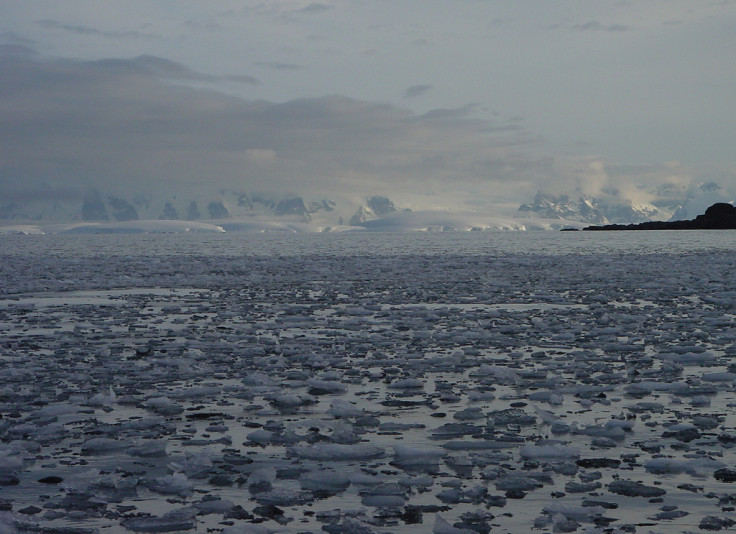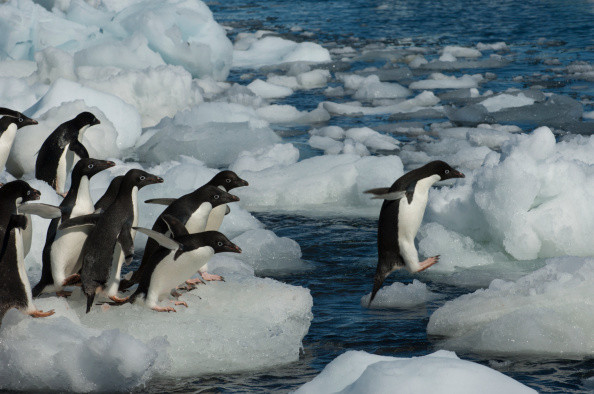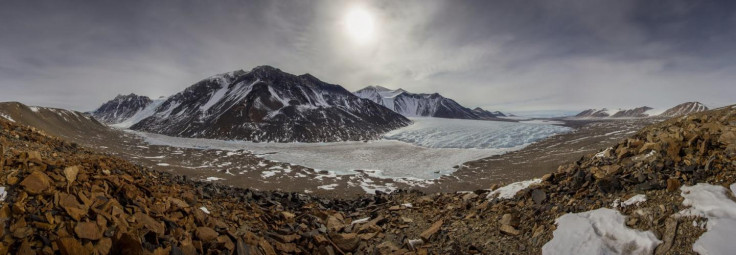This is what would happen if Antarctica melted
Global warming will increase the risk of Antarctica melting and scientists want to know how ecosystems would react.

If Antarctica melted, it would lead to population variation among penguins, larger proportions of krill in the ocean and long-term changes in the structure of Antarctic lakes' microbial communities, scientists have said.
Antarctica almost solely constitutes ice – the Antarctic ice sheet indeed covers roughly 98% of the entire continent, but it is home to very different ecosystems, ranging from polar deserts with freshwater lakes to coasts and marine environments. For many years, there have been concerns as to what the future would hold for Antarctica's ecosystems as temperatures keep on rising around the globe.
To find out more about how global warming and ice melt may affect this remote continent and how polar ecosystems will respond to this change, a special section in the October issue of BioScience focuses on what happened during an isolated warming event, between 2001 and 2002.
This event occurred when the intersection of two climatic cycles – the Southern Annular Mode and the El Niño Southern Oscillation – produced a particularly hot and windy spring season.
The scientists assessed the effects of the warm climate on two very different Antarctic ecosystems – the West Antarctic peninsula, a marine-dominated coastal system, and the terrestrial and freshwater ecosystems of Antarctica's Dry Valleys.
West Antarctic Peninsula
Research regarding this Antarctic ecosystem was carried out by the Palmer LTER, a centre established in 1990 at the National Science Foundation's Palmer Station. In 2001 and 2002, the climate led to increased melting at the edge of the peninsula, thus releasing freshwater containing ice algae into the ocean.

This promoted the growth of the Antarctic krill population, for they were able to feed of these new nutrients. Since krill is a major food source for a great number of animals – from penguins to whales and even seabirds – this appeared to be a positive development for the fauna.
However, the warm bouts of weather across the period were also responsible for greater snowfall and earlier melting of snow in the spring, which had devastating consequences for early-hatching Adélie penguins as it flooded their nests. It gave an advantage to later-nesting species, such as the gentoo and chinstrap penguins.
Antarctica's Dry Valleys
Changes to the dry valleys ecosystem are being monitored by the McMurdo Dry Valleys LTER, established in 1992. The 2001-2002 climatic event led to a rapid melting of the mountain glaciers. This had a number of consequences: it turned the parched landscapes of the polar desert into a watery landscape with streams running through it and rose the levels of lakes. This last phenomenon was further enhanced by the fact the thick lake ice thinned quickly.

Lakes were also transformed by the dissolved organic carbon from the streams that increased bacterial productivity deeper in the lakes and potentially led to long-term transformation of their microbial communities.
With warming events predicted to become commonplace in the next decades, the scientists believe learning about the impact of temporary warming episodes on Antarctica's ecosystems is a good way to find out how they will respond to the changes coming their way. It may also allow us to come up with strategies to limit the negative impacts of ice melting.
© Copyright IBTimes 2025. All rights reserved.






















